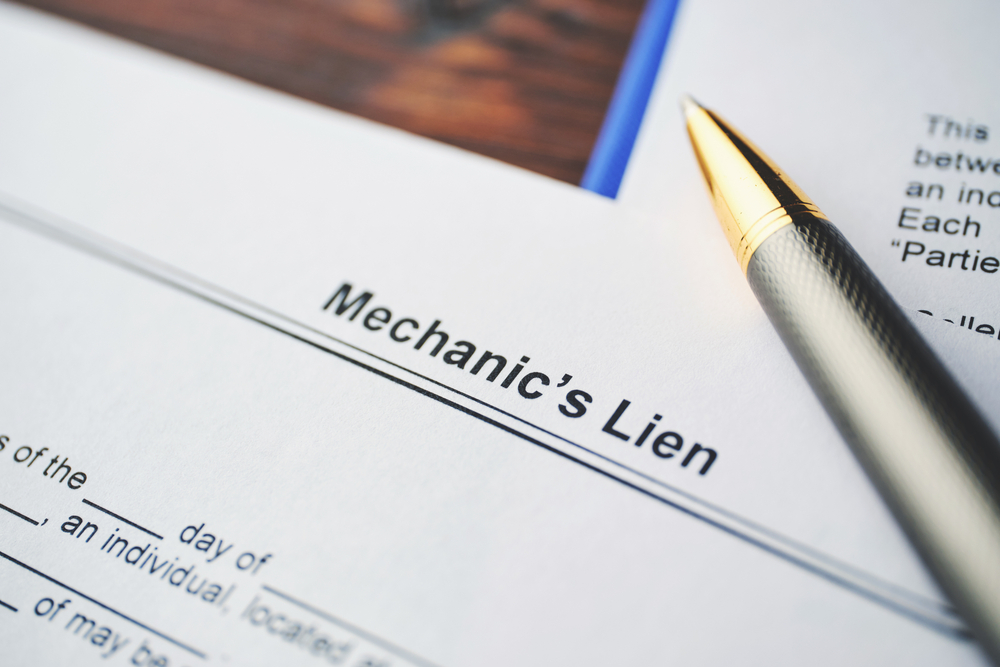
Mechanic’s liens exist to protect the rights of construction professionals and to help ensure they are properly compensated for work or materials they have provided. While the purpose liens serve is beneficial, maneuvering through the process in Texas can be complicated and tricky. To get you started with understanding the basics, the construction attorneys at The Cromeens Law Firm, PLLC, answer these five questions:
1. What is a mechanic’s lien?
A mechanic’s lien, also known as a materialmen’s lien (M&M lien), is a legal recourse that construction professionals can utilize to enforce payment for their labor as well as any materials or supplies purchased for a project or improvement to a property. These types of liens are filed in the real property records against the property where labor and/or materials were used.
The M&M lien is like an involuntary mortgage the property owner did not agree to, but if done correctly, the owner will be forced to pay. Oftentimes, since project agreements are usually made through the general contractor, the property owner may not have ever met or come in contact with the lien claimant until the lien process was initiated. Additionally, as a result of an M&M lien, the property owner will face difficulties in selling or refinancing the property without first paying off the debt.
2. Who can file a lien?
An M&M lien can be filed by any construction professional who has not been compensated for providing labor, supplies or materials for a construction, repair, building, improvement or renovation to a property, including:
Additionally, Texas law also allows an M&M lien to be filed for custom materials specific to a project that were not delivered to the property but cannot be used anywhere else, including tinted paint, specially sized windows, doors, etc.
3. What information do I need in order to file a valid lien?
There are a number of items and pieces of information that need to be included in order to file a valid lien. Failure to produce any of the following information could result in an invalid lien:
4. How do I start the process?
Before a valid M&M lien can be filed, preliminary notices must be sent to the property owner and the general contractor by the predetermined deadlines. These notices give the owner and general contractor a chance to resolve the claim prior to filing a formal lien.
For a non-residential project, the first notice that is required to be sent is only a statement to the general contractor with the amount you are due, letting them know you are owed money for the project. This notice must be sent by the 15th day of the second month after the first work was done or materials were supplied that you are owed money for.
The next letter is the formal intent to lien and is sent to both the general contractor and the property owner. This notice needs to be sent the 15th day of the third month after first work done or material supplied that you are owed money for.
For residential projects, the first notice that is required to be sent is the formal intent to lien and needs to be sent to the owner and general contractor by the 15th day of the second month after the first work was done or materials were supplied that you are owed money for.
These notices must be sent certified, not filed with the County Clerk’s office, and require that specific statutory language is included. If the notices were not sent, a lien should not be filed. Any lien filed without sending the required notices is invalid.
After providing the notices, the next step is to file an Affidavit of Mechanic’s Lien in order to collect on your delayed payments. The affidavit is the document claiming the lien and must be filed in the real property records of the County Clerk’s office in the county in which the property is located. Keep in mind the timelines for filing a lien have a different start date than the notice letters.
Additionally, as the claimant, once you have filed an M&M lien, you must also file a court action to enforce the lien within one year for residential liens and two years for non-residential liens.
5. How do I know what my deadlines are in order to remain within the guidelines to file a valid lien?
In Texas courts, missing just one of the deadlines even by a day can result in an invalid lien.
Since notification types, deadlines and recipients all vary depending on project types, it is strongly recommended to seek guidance from experienced construction attorneys in order to guarantee all deadlines are met and the lien is valid.
At The Cromeens Law Firm, PLLC, we know liens and work to protect you rights. If you have provided services or materials for a project and have not been paid for that work, contact us today, and we can help you determine the right strategy to implement.
This article is intended as a general educational overview of the subject matter and is not intended to be a comprehensive survey of recent jurisprudence, nor a substitute for legal advice for a specific legal matter. If you have a legal issue, please consult an attorney.
Karalynn Cromeens is the Owner and Managing Partner of The Cromeens Law Firm, PLLC, with over 17 years of experience in construction, real estate, and business law. A published author and passionate advocate for contractors, she has dedicated her career to protecting the businesses her clients have built. Karalynn is on a mission to educate subcontractors on their legal rights, which inspired her books Quit Getting Screwed and Quit Getting Stiffed, as well as her podcast and The Subcontractor Institute.

